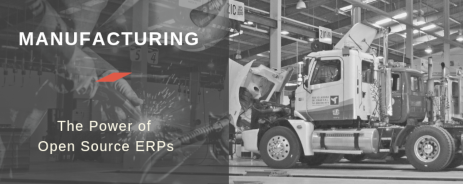
How IoT Is Changing the World as We Know It
The Internet of Things — IoT, for short — is a broad topic that covers varying technologies across multiple industries. But IoT interventions tend to share the same goals, regardless of the application. That is, IoT systems aim to decrease financial inefficiencies, increase profits, improve real-time decision making, and increase overall efficiency.
The IoT does all this by empowering employees, managers, and executives with real-time solutions. This growing field of technology is changing the way businesses operate by opening new windows of opportunity. Although discussions of IoT are everywhere, few bother to explain the basics of IoT. What is it? How can the IoT help my company? What do I need to do to catch up with the billions of devices already online by competitors?
This article hopes to answer some of these questions, starting with a bare-bones definition of an IoT-enabled device: The term describes the ability to connect any physical device to a WiFi network so the device can be accessed remotely. Some examples of IoT solutions include smart locks, security cameras, smart bulbs, Nest thermostats, and WiFi-capable manufacturing floor equipment.
Because these devices can be accessed remotely, it’s easier for users to complete simple tasks such as monitoring or controlling plant floor equipment. Although we are already seeing the IoT in consumer products, the possibilities reach nearly every market. Large production machinery, oil rig components, plane and shuttle mechanics, medical equipment, and nearly anything else that collects data can be monitored remotely or tied into your software systems.
How Extensive Is the IoT Already?
Billions of IoT devices are already online, busy collecting data, simplifying processes, and increasing efficiency for countless applications. Statista estimates there will be more than 30 billion installed connected devices by 2020 and over 75 billion by 2025.
This massive number of connected devices will forever change the nature of relationships between devices, between people and devices, and even between people.
How Are Companies Using the IoT?
For a representative example of how the IoT is changing industrial processes, look to the warehousing industry. In this field, ERP systems are being connected to warehouse door locks so management can track employees entering secured areas. The ERP warehousing system can create a temporary virtual key, assign that key to an individual employee, and give that employee limited access to secured products. In situations like these, IoT doesn’t just change the warehouse process — it simplifies the entire work process.
Other common IoT solutions include connecting shop floor equipment to ERPs, connecting company data to physical reporting devices like shop warning lights, and using physical devices to send analytic reports/warnings to mobile phones or desktop computers. The possibilities are endless.
Is My Company Too Small for IoT Solutions?
The short answer to this question is, emphatically, “no.” It is important to understand the changes in technology that makes the IoT so prevalent now. The IoT is not a new concept, and because devices are now available at a lower cost, small and medium-sized companies can afford to implement solutions now.
Modern business physical devices are often already WiFi capable or have an interface that makes them easy to connect to your network. Collecting data from these devices and passing the data to your analytical software is becoming a simple, plug-and-play operation.
How the IoT Will Change the World
If it can be connected, it will be connected. This is what the future landscape of technology looks like. We can already see drastic changes the IoT is making in how we interact with common tasks.
A perfect example of this is what they call intelligent retail. Amazon “Go” stores are using sensors to completely remove cashiers and checkout lanes from grocery stores. The store sensors automatically detect when an individual enters a store, identifies them, identifies what items they remove from shelves and leave with, and then charges their accounts appropriately. This type of experience can be applied to anything that can be controlled via sensors.
Another example is in manufacturing. Smart or “connected” floor equipment allows this equipment to retrieve updated information, automatically determine best processes, and automatically reprogram tooling depending on manufactured product specifications. This equipment can also send production data in real-time to analytical software and update managers prior to and during malfunctions.
The application of IoT technology impacts all stages of industry. Production and distribution will gain a significant increase in efficiency. In the same way that cutting edge restaurants and bars are automatically detecting alcohol usage and automating inventory ordering, large production plants can use the IoT to eliminate the need for manual inventory management and ordering processes. Moreover, the manufacturing processes can be closely monitored by sensors to locate efficiency opportunities in production.
The IoT-Powered City
Imagining a city completely driven by the IoT paints a strong picture of what our future may look like. Smart roads will guide traffic for automated vehicles. Smart buildings are energy efficient by controlling lights and building temperatures. Trash collection operates by monitoring how many full trash bins are placed in an area and then dispensing automated collection vehicles at a certain threshold.
In the IoT-powered future, air and water pollution levels can be monitored, with immediate corrective process modifications for industries in the area. The structural integrity of buildings, roads, and bridges can be managed by sensors instead of human inspection, preventing dangerous structural catastrophes and allowing for more efficient preventative management of these structures.
The Internet of Things is already here. It is already creating change in the relationship between humans and technology — and it is not going away. Industries are increasing efficiencies and revenues while creating a better customer experience by taking part in the new and exciting world of the Internet of Things.




